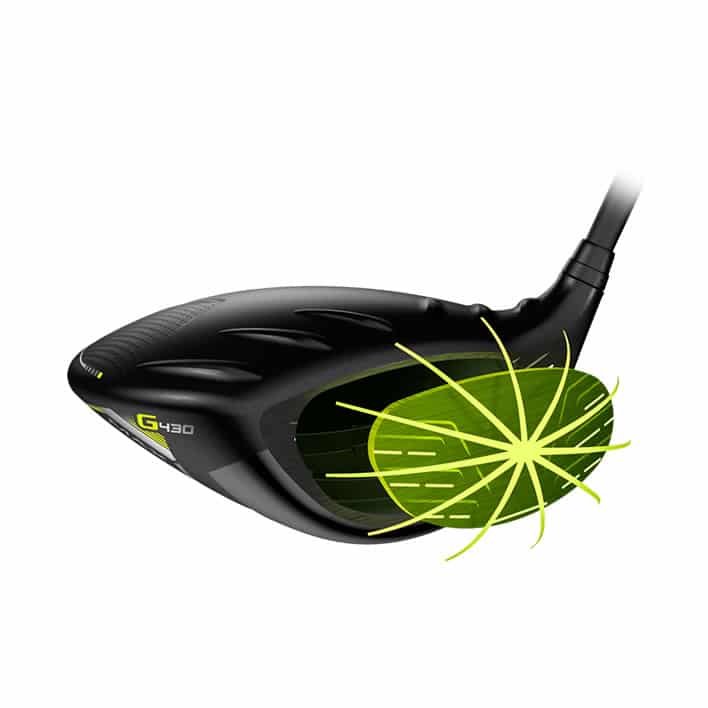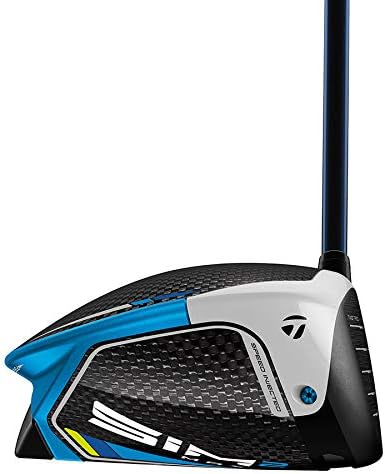Looking for a new club, but not sure which of the top drivers you should choose? In this guide we cover the best drivers for high handicappers and beginners released this season.
Below we’ll be covering releases from leading golf club brands such as: Callaway, Ping, TaylorMade and Cobra. And specifically, we’ve shortlisted the best drivers for beginners that help improve swing speed, distance and reduce your slice!
The Best Drivers For High Handicappers & Beginners in 2023
Whilst there are a ton of new golf drivers for beginners released each year, we shortlisted from dozens and chose only the very best. A disclaimer here might be that I generally lean towards Ping over any other brand. If you stick to the 4 clubs mentioned below, you won’t find there’s a ton of difference between them, so then it really comes down to brand preference, or potentially, price.
- Ping G430 SFT – our overall pick: the best driver for beginners
- TaylorMade Sim 2
- Callaway ST Max D
- Cobra Aerojet Max
1. Ping G430 SFT

If you’re a slicer, which the majority of high handicappers and beginners are, then the Ping G430 SFT is going to be the club for you. If you’re not finding your game is massively hindered by slicing, then the Ping G430 MAX is going to be the club we’d recommend.
The average golfer is going to battle with their slice for quite a while, years on most occasions. Back when the Ping G400 SFT was released back in 2017, it eliminated slice for many high handicappers, us included. And each year Ping releases a new SFT they continue to improve.
That’s not to say the new Ping G430 SFT is perfect. High handicappers and beginners are still going to still hit a fade with it here and there, but it’s going to be playable in comparison to clubs designed for mid or low handicappers.
Although you can pick up used clubs such as the G410 SFT at a fraction of the cost of new, we’d always try to budget for new. And that’s not just because of condition, it’s because each year top golf club brands (Ping included), improve their club tech dramatically.
If a slice is your current miss, then the Ping G430 SFT will help to straighten you out. I mean the SFT, literally stands for “Straight Flight Technology”. It helps reduce sidespin, which is what causes the ball to spin in the first place. Less side spin? Less chance of a slice!
And of course being a modern driver, it’s built for speed. So not only will you hit more fairways, you’ll be closer to the green when you do, making it one of the most forgiving drivers for beginners.
Put simply, by using the G430 SFT over a club more suited to mid handicappers, high handicappers are going to see:
- Lower spin, so more distance
- Increased swing speed
- Consistency.
2. TaylorMade Sim 2

TaylorMade’s “Twist Face” technology caused a big splash in the golf world a few years back, and their SIM range is made up of some of the top drivers currently available on the market. The unique curvature in the face reduced sidespin and helped to produce longer, straighter shots — and they’ve continued to improve the tech each year, culminating in their latest SIM range.
When I tested the TaylorMade SIM driver (specifically the Sim Max) I found that it wasn’t quite as forgiving as the Ping G430 for me. But it definitely flew a little further.
So if it’s distance you’re after, then TaylorMade Sim is probably the right driver for you. But if you are prepared to sacrifice a few yards for (perhaps) less dispersion, then I’d recommend the Ping.
Although with that being said, TaylorMade Sim drivers are still very forgiving. And there’s also the fact that I’ve been gaming Ping drivers for years so I am probably more comfortable swinging with them than I am with TaylorMade.
I didn’t make a specific recommendation on which TaylorMade Sim driver to go for here, as the right one for you will depend on your miss/where you are in your game. A quick overview:
- Sim 2: adjustable weight that lets you adjust for draw/fade bias. You can adjust/tweak to suit your shape
- Sim 2 Max: no adjustable weight and in-built draw bias
- Sim 2 Max D: again, no adjustable weight and even more draw bias. The D stands for “Draw”.
So if you’re a slicer, you’ll probably want to go with the Sim 2 Max (or Sim 2 Max D). But if you’ve got a two-way miss, or are working on improving your swing, you might find the adjustability of the regular Sim Max more suitable.
As an example, if you went for the Sim 2 Max D (to help fix a big slice) then a few months down the line had improved your swing, there might be too much draw bias. The result would probably be swapping your right miss with a left miss. And believe me, I know from experience that the left side of the course is just as punishing as the right side. In fact, at one point, I found myself wishing that my slice would return!
In summary: all three Sim drivers are great clubs that will do good things for your tee game. But just give some thought to which one is right for you at both this point on your golf journey, and where you expect to be six months down the line.
3. Callaway ST Max D

Callaway serves the mid to high handicap market well. And their latest driver for this sector — the Callaway Rogue ST MAX D — promises to be their best driver for beginners yet.
It’s undoubtedly the case that all the major golf brands are using some computer assistance to maximize speed and launch conditions, but as far as I’m aware, Callaway are the only manufacturer to state that AI actually designed the club. Worries about your driver suddenly developing sentience and plotting against you notwithstanding, it will be interesting to see how this develops over the next few years.
Rogue ST Max D drivers have been built with a certain subset of golfers in mind; golfers that want forgiveness. Let’s face it, any beginner or high handicapper is going to benefit from any increase in forgiveness. The more forgiving the driver you use, the more consistent your game is going to be, and that’s only going to lead to a lower handicap.
As we mentioned above, Callaway are always at the forefront of golf club tech. The Rogue ST Max D uses a new Tungsten Speed Cartridge. This focuses on increasing speed for off center hits and overall, gives consistency, stability and increased speed.
All in all, a great looking driver that’s bound to save you a few strokes.
4. Cobra Aerojet Max

Onto Cobra, and we’ve chosen the Cobra Aerojet Max as our driver of choice for high handicappers and beginner golfers.
Before updating our guide to the best golf drivers for high handicappers, this feature was dedicated to the Cobra F-Max Offset Driver. An amazing club that’s hugely forgiving. Whilst we’re changing up our recommendation to the newly released Cobra Aerojet Max, if you’re on a budget, picking up a used Cobra F-Max Offset Driver is going to offer you exceptional value for money (see our guide to buying secondhand golf clubs here).
When you look at comparable models from years prior, you’ll see that Cobra has worked on a much more sleek design. Although that’s great for aesthetics, this is also crucial when it comes to aerodynamics; giving beginner and high handicap golfers alike both consistency and speed.
Like many of the clubs on this list, the focus of the Cobra Aerojet Max is to help straighten your slice. If you’re looking for the most forgiving driver in the Cobra range of clubs, then the Aerojet Max is exactly what you need.
Cobra know the mid to high handicap sector extremely well and their drivers are highly recommended if you need to hit the short stuff more often.
Which Driver is Best For Beginners?
We’ve chosen the best drivers for high handicappers to help straighten their shots and add more distance. Essentially, rounding off your game so you can look towards lowering your handicap as soon as possible.
After testing the likes of the Ping G430 SFT, TaylorMade Sim 2 Max, Callaway ST Max D and Cobra Aerojet Max there isn’t a huge amount between them. Dispersion and ball flight were all at levels I’d be more than happy with on the course (I’d say a little more left if anything, as I already play a draw, and all these clubs are biased to that).
Our personal choice is the Ping G430 SFT, but then again…we’re a sucker for any Ping club.
Will A New Driver Actually Make A Difference To Your Game?
I’m sure you’ve heard the saying “drive for show, and putt for dough”. It sounds like good advice, but there’s a problem…
…if you can’t get to the green, then being the best putter in the world won’t do you any good.
And plenty of studies have shown that even on the PGA tour, it’s driving, rather than putting that’s going to have the biggest impact on scoring.
Bottom line: hitting fairways and “getting it out there” is the key to lowering your handicap.And while the putter you choose isn’t going to have a huge impact on your game, the good news is that the right driver can make a big difference. You’re not going to become a scratch golfer overnight, but with a modern, forgiving driver in your hand, you’ll become a lot more confident on the tee box.
FAQ: Golf Drivers for Beginners & High Handicappers
Will a new driver help reduce my slice?
Yes, but only if you pick the right one. A driver designed for low-mid handicappers is potentially going to make your slice worse. What you need is a forgiving driver designed for high handicappers and beginners, like our top pick here.
How can I stop slicing with my driver?
First, you need a suitable club, like the ones featured on this page. Next, jump to our page that focuses on how to stop slicing in golf.
Is a regular or stiff shaft best for beginners?
High handicappers will benefit from a flexible shaft in their golf driver. Typically, stiff shaft drivers are designed for low handicappers that have more speed in their swing.
Which golf driver brands are the most popular?
Some of the most popular golf drivers come from Ping, TaylorMade, Callaway and Cobra. A list of the 10 best golf club brands can be found here.
What loft should my driver be?
Loft is based on your swing speed. Low handicap = low loft, and high handicap = high loft. So, as a high handicapper or beginner, you’ll likely have a slower swing speed than a low handicapper. High handicappers tend to suit lofts of 10-14 degrees, whereas mid-low handicappers may go for a lower loft of around 8-10 degrees.
How do I swing my golf driver?
Use a reverse K setup and don’t focus on turning your shoulders. Your backswing should feel like your club only goes parallel, and the downswing should feel like you’re going through the ball as if you’re skimming a stone. See our guide on how to swing a driver here.
How can I improve my driver swing speed?
If you’re a beginner or high handicapper, we’d recommend looking at a specific golf training aid. We’ve covered the top golf swing speed trainers here.
What’s Next? Golfer Logic’s Buying Guide: Wedges for High Handicappers.





